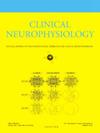黄金海岸标准对肌萎缩性侧索硬化症的诊断准确性:一项系统评价和荟萃分析
IF 3.6
3区 医学
Q1 CLINICAL NEUROLOGY
引用次数: 0
摘要
目的比较Gold Coast标准(GCC)与修订El Escorial标准(rEEC)和Awaji标准(AC)对肌萎缩性侧索硬化症(ALS)的诊断准确性。方法检索到2024年12月的spubmed、EMBASE、Web of Science、Cochrane Library和谷歌Scholar数据库。符合条件的研究使用GCC、rEEC和/或AC评估患者,报告或允许计算敏感性和特异性。采用QUADAS-2和STARD对质量进行评价。“Probable+”包括可能的和确定的分类;Possible+包含了Possible到definite。敏感性分析排除了具有输入数据的最大研究,并纳入了仅敏感性模型。PRISMA-DTA兼容;普洛斯彼罗CRD42025623678。结果纳入9项研究(n = 9656),均来自ALS转诊中心。GCC的敏感性(~ 95%)高于rEEC和AC Probable+(59%和54%)和Possible+(84%和85%),但特异性(66%)低于rEEC (Probable+ 94%, Possible+ 77%)和AC (Probable+ 94%, Possible+ 82%)。GCC获得最高的AUC(0.95)和诊断优势比(36.1)。仅敏感性分析证实了GCC的性能(97%)。结论sgcc具有较高的敏感性,可能有助于早期识别和试验纳入。它们较低的特异性需要谨慎,特别是在低患病率的情况下。在未选择的神经病学人群中的适用性仍不确定。egcc可能使ALS的早期诊断和及时的临床试验纳入转诊中心。本文章由计算机程序翻译,如有差异,请以英文原文为准。
Diagnostic accuracy of the Gold Coast Criteria for amyotrophic lateral sclerosis: a systematic review and meta-analysis
Objective
To compare the diagnostic accuracy of Gold Coast Criteria (GCC) with Revised El Escorial Criteria (rEEC) and Awaji Criteria (AC) in suspected amyotrophic lateral sclerosis (ALS).
Methods
PubMed, EMBASE, Web of Science, Cochrane Library, and Google Scholar were searched through December 2024. Eligible studies assessed patients using GCC, rEEC, and/or AC, reporting or allowing calculation of sensitivity and specificity. Quality was evaluated using QUADAS-2 and STARD. “Probable+” included probable and definite classifications; “Possible+” encompassed possible to definite. Sensitivity analyses excluded the largest study with imputed data and included a sensitivity-only model. PRISMA-DTA compliant; PROSPERO CRD42025623678.
Results
Nine studies (n = 9656), all from ALS referral centers, were included. GCC showed higher sensitivity (∼95 %) than rEEC and AC Probable+ (59 % and 54 %) and Possible+ (84 % and 85 %), but lower specificity (66 %) vs. rEEC (Probable+ 94 %, Possible+ 77 %) and AC (Probable+ 94 %, Possible+ 82 %). GCC achieved the highest AUC (0.95) and diagnostic odds ratio (36.1). Sensitivity-only analysis confirmed GCC performance (97 %).
Conclusions
GCC demonstrated superior sensitivity, potentially facilitating earlier recognition and trial inclusion. Their lower specificity requires caution, particularly in low-prevalence contexts. Applicability in unselected neurology populations remains uncertain.
Significance
GCC may enable earlier ALS diagnosis and timely trial enrollment in referral centers.
求助全文
通过发布文献求助,成功后即可免费获取论文全文。
去求助
来源期刊

Clinical Neurophysiology
医学-临床神经学
CiteScore
8.70
自引率
6.40%
发文量
932
审稿时长
59 days
期刊介绍:
As of January 1999, The journal Electroencephalography and Clinical Neurophysiology, and its two sections Electromyography and Motor Control and Evoked Potentials have amalgamated to become this journal - Clinical Neurophysiology.
Clinical Neurophysiology is the official journal of the International Federation of Clinical Neurophysiology, the Brazilian Society of Clinical Neurophysiology, the Czech Society of Clinical Neurophysiology, the Italian Clinical Neurophysiology Society and the International Society of Intraoperative Neurophysiology.The journal is dedicated to fostering research and disseminating information on all aspects of both normal and abnormal functioning of the nervous system. The key aim of the publication is to disseminate scholarly reports on the pathophysiology underlying diseases of the central and peripheral nervous system of human patients. Clinical trials that use neurophysiological measures to document change are encouraged, as are manuscripts reporting data on integrated neuroimaging of central nervous function including, but not limited to, functional MRI, MEG, EEG, PET and other neuroimaging modalities.
 求助内容:
求助内容: 应助结果提醒方式:
应助结果提醒方式:


